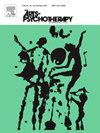纪录片健康:探索纪录片作为治疗资源
IF 1.5
3区 心理学
Q3 PSYCHOLOGY, CLINICAL
引用次数: 0
摘要
虽然心理咨询和心理治疗已经使用了几十年的电影,纪录片作为视觉媒体不断增加的存在的一部分解释了当代生活,但对纪录片在治疗中的地位和潜力的透彻理解在理论,研究和实践中仍然不发达。客户的自传式电影制作在这些背景下获得了一个小的立足点。然而,对已有纪录片的观看相对较少,尽管这些电影提供了叙事和隐喻的丰富性,可以帮助传达和澄清生活经验。为了解决这一很大程度上潜在的机会,并促使人们更多地关注该类型的整体治疗效用,本文在文献化的标题下列出了前瞻性的实践指南。这是一个协作和非指令的过程,通过这个过程可以探索和部署治疗师-来访者的文件约定。本文首先概述了与电影相关的治疗和纪录片在其中的潜力,然后提供了使用指南和一系列来自治疗实践的匿名案例研究。需要围绕文献记录进行进一步的研究,以提供对治疗结果的经验见解。本文章由计算机程序翻译,如有差异,请以英文原文为准。
Documental health: Exploring documentary films as a therapeutic resource
While counseling and psychotherapy have utilised film for decades, and documentary film is interpretive of contemporary life as part of visual media’s ever-increasing presence, a thorough understanding of documentary’s place and potential within therapy remains underdeveloped in theory, research, and practice. Autobiographical filmmaking by clients has secured a small foothold in these contexts. However, the viewing of pre-existing documentaries is relatively rare despite such films offering narrative and metaphoric richness that could assist in the conveying and clarification of lived experience. With the intention of addressing this largely latent opportunity and prompting increased attention to the genre’s overall therapeutic utility, this paper sets out prospective practice guidelines under the title of documentalization. This is a collaborative and non-directive process through which therapist-client documentary engagement may be explored and deployed. The paper begins by outlining film-related therapy and the potential of documentary within it before offering guidelines for use and a series of anonymised case study vignettes from therapy practice. Further research around documentalization is required to provide empirical insight into therapeutic outcomes.
求助全文
通过发布文献求助,成功后即可免费获取论文全文。
去求助
来源期刊

Arts in Psychotherapy
Multiple-
CiteScore
3.20
自引率
11.10%
发文量
66
期刊介绍:
The Arts in Psychotherapy is a dynamic, contemporary journal publishing evidence-based research, expert opinion, theoretical positions, and case material on a wide range of topics intersecting the fields of mental health and creative arts therapies. It is an international peer-reviewed journal publishing 5 issues annually. Papers are welcomed from researchers and practitioners in the fields of art, dance/movement, drama, music, and poetry psychotherapy, as well as expressive and creative arts therapy, neuroscience, psychiatry, education, allied health, and psychology that aim to engage high level theoretical concepts with the rigor of professional practice. The journal welcomes contributions that present new and emergent knowledge about the role of the arts in healthcare, and engage a critical discourse relevant to an international readership that can inform the development of new services and the refinement of existing policies and practices. There is no restriction on research methods and review papers are welcome. From time to time the journal publishes special issues on topics warranting a distinctive focus relevant to the stated goals and scope of the publication.
 求助内容:
求助内容: 应助结果提醒方式:
应助结果提醒方式:


